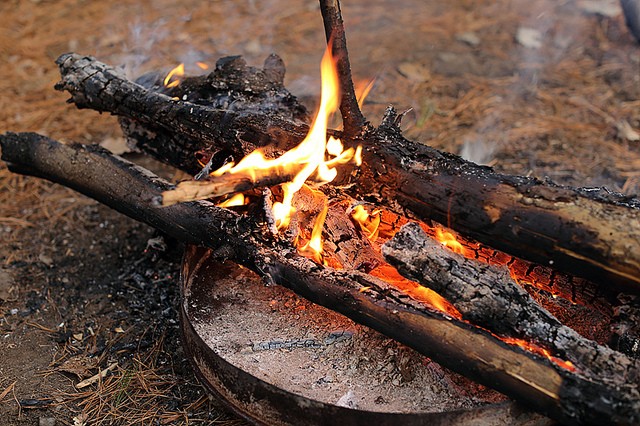Personally, while understanding the “Old Ways” of survival and bushcraft is important to understanding why the new ways work, most of us are geared towards immediate results.
That is to say, it is great to be able to start a fire with two sticks, but unless your situation is indeed dire, why would you do that if you have modern tools at your disposal; here is one take on that opinion.
Skills in Context
“if it’s not in context, it’s just arts and crafts.”
~ Steven M. Watts (1947-2016)Wilderness survival skills are often taught in a vacuum without background information on how these skills personally relate to the student, locale, and history. I’m fortunate to be a student of Scott Jones in the field of primitive technology and experimental archaeology. Scott wrote his latest book, Postcards to the Past, with the intent of developing “practical perspectives for observing, interpreting, and utilizing the natural world” by modern primitive practitioners like myself.
I may have hands-on knowledge of fire by friction, but do I have the wisdom to know “when” and “why” to use this skill? I have been humbled on more than one occasion attempting to spin up a coal with friction fire techniques on “dry” days in Georgia. Our humidity sticks to you like fly paper. Add a steady rain or a slight drizzle and I reach for my thumb drill (Bic lighter) or other modern devices to start my fire.
Should you add friction fire methods to your skill set? Is it even practical? The more I practice primitive, the more confidence I build in using a bow and drill or hand drill as a survival insurance policy.
On my journey of outdoor self-reliance, I have found that nothing beats preparedness. Even on day hikes with Dirt Road Girl, I carry my haversack packed with emergency shelter, water bottle, sheath knife, tarred mariner’s line, with room for other essentials… and the occasional rock that catches her eye. Instead of making shelter from forest floor debris, a time and labor intensive doing, my emergency space blanket or GI poncho can be strung up with little effort if need be.
Again, context is essential. Skills to return or stay may overlap. The tools and mindset to acquire comfort in the woods are what distinguishes the two. However, the logical choice for most outdoorsy folk is the later.
The first peoples to settle a land had to make do with what they had, not what they wished they had available. Skills to accomplish this task were passed down from generation to generation. For us moderns, through practice and experimentation, we too can incorporate these wilderness living skills to expand our options.
The main reason I practice primitive fire is the integration into the natural world I gain.
Another practical reason for friction fire practice is the attention to detail required. Preparing finely processed tinder material which will turn a small coal into fire is a practice which transfers nicely when using an open flame or 3,000 degree sparks from a modern ferro rod.Mastering different fire by friction techniques is my goal. But it’s not a method I try first when I’m cold and wet. Add the stress of a real survival situation with accompanied elevated heart rate and the fine motor skills needed to craft an effective bow drill set from the landscape is quickly lost. This bit of context is lost on most folks watching entertaining videos from the comfort of home.
Old versus new is an ageless debate. This is particularly true in the outdoors – whether you are talking about hiking, fishing, hunting, bushcraft and much more – mainly because technology has made a lot of “survival” much easier.
Personally, knowing the old ways is very important to understanding why the new ways work, but I might be unique.
To see more on this topic, please visit the Survival Sherpa.
Featured Image via Flickr
